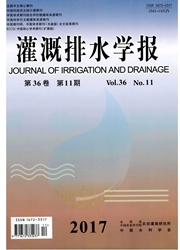

 中文摘要:
中文摘要:
快速获取大范围土壤地表粗糙度的空间分布是一个急需解决的科学难题。以快速获取内蒙古河套灌区解放闸灌域土壤地表粗糙度为目的,研究了RADARSAT-2雷达影像数据的地表粗糙度信息提取技术,通过剖面板法实测地表粗糙度数据。利用BP(Back Propagation)人工神经网络和LMBP(Levenberg-Marquardt Back Propagation)人工神经网络模型2种方法建立了土壤地表粗糙度的定量反演模型,并对模型进行验证。结果表明,LMBP模型的反演效果优于BP模型,其决定系数R2分别为0.888 3、0.689 2。建立的雷达后向散射系数反演土壤地表粗糙度的人工智能模型,能够在一定程度上满足快速获取土壤地表粗糙度的需要,为微波遥感监测土壤墒情及土壤盐渍化提供重要基础参数。
 英文摘要:
英文摘要:
Quick calculation of spatial distribution of soil surface roughness is important both practically and sci- entifically. In this paper we investigated the feasibility of using the radar image of RADARSAT-2 to inversely cal- culate the surface roughness of Jiefangzha Irrigation area in Hetao Irrigation District of Inner Mongolia. The sur- face roughness in the radar image was calculated by the sectional plate method. We used both back propagation (BP) artificial neural network and the Levenberg-Marquardt back propagation (LMBP) artificial neural network to calculate and verify the inverse model for quantifying the surface roughness. The results showed that the LMBP model was superior to the BP model, witha R-squared coefficient of 0.888 3 and 0.689 2 respectively. Cal- culating soil surface roughness inversely using artificial intelligent model and the radar backscatter coefficient is quick, providing important basic parameters for using microwave remote sensing to monitorsoil moisture and soil salinization.
 同期刊论文项目
同期刊论文项目
 同项目期刊论文
同项目期刊论文
 期刊信息
期刊信息
